Define Our Future
14 June 2024

(Image: Adobe)
On Tuesday 18th June, the United Nations Office for Outer Space Affairs will host the first Conference on Sustainable Lunar Activities. The aim of the conference is to bring about a meaningful discussion on lunar cooperation in order to bring the benefits of space “to all humankind”. Discussions will aim to understand shared visions as well as the different international approaches to regulating lunar activities, while aiming to “identify potential avenues for global coordination” as a means of building a sustainable future on the Moon.
Representatives from NASA, the Japanese Space Agency (JAXA), the China National Space Administration (CNSA), the Indian Space Research Organisation (ISRO) and Russia (angst others) will discuss the importance of communicates and coordination in ensuring peaceful operations. Industry leaders from private sector companies - such as Intuitive Machines and Blue Origin - will also be present, representing the increasingly leading role commercial entities are now playing in developing the New Lunar Economy.
Also, signatories from the US-led Artemis Accords and the Chinese-led International Lunar Research Station project (ILRS) will discuss these two different frameworks for outer space exploration, and how they could establish regulatory standards for a safe and peaceful future. Lastly, a workshop discussion will strive to engage discussion on where to find commonalities “including legal and regulatory aspects, that all parties can support”, aiming to support standards of behaviour.
The discussions come at a pressing time, as more national and private entities head to the Moon, with an ever-increasing and diverse set of both scientific and economically-driven missions.
Overarching problems with space governance in the commercial age
In the past year we have seen the fourth and fifth nations to land softly on the Moon (India and Japan, respectively), the first successful commercial lunar landing, and the first commercial services provided form the lunar surface (data recovery services from Lonestar Data). China are currently in the process of retrieving samples from the far-side of the Moon, and within the next 6 to 7 months we may see an additional four commercial lunar missions launch. Moreover, the European Space Agency claims that we may see over 100 missions to the Moon by the end of the decade.
The challenges that we face are well-known within the industry, many of which boil-down to the ambiguity and lack of internationally recognised regulations, especially relating to the rapid influx of commercial actors, the utilisation of space resources and the safe and peaceful coordination of activities.
As we often report, there is one binding global treaty in the form of the UN Outer Space Treaty (OST), committing all the major space powers to principles such as; space remaining the “province of all mankind”; that outer space is “not subject to national appropriation by claim of sovereignty”; and that the Moon and other celestial bodies shall be used “exclusively for peaceful purposes”.
While this does form a good moral foundation, the treaty is often seen as outdated, ambiguous and not suited for the commercial age. There is little which addresses the activities of private companies in space or the use of resources on places such as the Moon. This raises many questions; if it is forbidden to appropriate territory on the Moon, can the same be said about lunar resources, such as water, rare-earths, metals and helium-3? If the Moon is the “province of all humankind”, then does this mean that resources are also a global commons? Can resources be commercialised?
The OST makes a good start, but is now 57 years old, written at a time perhaps when the prerogative was to maintain peace and prevent the placement of weapons in orbit and outer space, amid cold war tensions. The treaty now presents big gaps in relation to the renewed intentions of public and private actors in the new space age.

US signs OST in 1967 (Image: UN Photo)
Proposed Solutions and Developments Regarding New Governance Frameworks
Suggestions have been made in order to plug regulatory gaps in outer space, with many suggesting that the Outer Space Treaty could be reopened and updated for the modern, commercial age. Professor Douglas Ligor argues just this, in an article for War On The Rocks, saying that “the international community might consider updating the existing space legal regime to ensure it meets current political, economic, social, and technical challenges”.
This could be a potential solution, especially considering that the OST is one framework that brings the rivalling nations of the US, China and Russia to the table. The US Artemis Accords and the Chinese ILRS are also both principally based on the principles of the OST, and each side claim to promote the peaceful and sustainable use of outer space.
However, given the current geopolitical tensions, economic rivalries and growing skepticism, it seems unlikely that enough trust exists in order for all sides to agree to this outcome.
Another potential solution exists in the UN Moon Agreement (1979). This does cover the contentious issue of space resources, stating that “the moon and its natural resources are the common heritage of mankind”, and that “neither the surface nor the subsurface of the moon, nor any part thereof or natural resources in place, shall become property of any State, international intergovernmental or non- governmental organization”. This would fundamentally answer the questions regarding ownership of resources in outer space, but is perhaps the reason why the agreement has only ever been signed by 17 nations, and none of the leading space nations.
However, one thing does appear to remain consistent, and that is the role of the UN and the Committee of Peaceful Uses of Outer Space (COPUOS), established in 1959 in order to avoid the extension of national rivalries into space. More recently, in May this year, participants agreed within the UNOOSA Lisbon Declaration that the COPUOS remains the principal role as the appropriate forum to discuss current and emerging challenges to the safe and sustainable use of space.
In relation to effective space and lunar resources management, in 2022 the COPUOS agreed to create a Working Group on the Legal Aspects of Space Resources Activity, and gave a five-year mandate to study current legal frameworks and assess the benefits of new frameworks for resource activities.
While current UN governance mechanisms still don’t comprehensively address the new challenges posed by rapid technological innovation, commercialisation and resource utilisation on the Moon, it does still represent ongoing efforts to address such issues through international dialogue.
Romania’s consultative proposal and other international frameworks to plug regulatory void
At a meeting of the COPUOS Scientific and Technical Subcommittee in February this year, Romania put forwards a proposal to encourage international dialogue in order to encourage safe, peaceful and sustainable operation on the Moon.
The proposal requests that an “international consultative mechanism on sustainable lunar activities” be established, which could assist in resolving a multiplicity of technical and technological issues, such as mitigating debris, landing site coordination and sharing information regarding resource management. The proposal asks for an “Action Team on Lunar Activities Consultation (ATLAC)” under the Committee to be established for this purpose. This idea may be gaining some traction, with the matter possibly being part of discussions during the conference on the 18th.
Furthermore, in March, China made a proposal to the Working Group on Space Resources Activities, regarding the regulation of space resources utilisation. Among the recommendations, the Chinese delegation restated its commitment to Article II of the Outer Space Treaty, that the Moon is not subject to national appropriation. It furthermore calls for measures to be put in place to protect resources for scientific exploration and to investigate any depletive impact commercial activities might have on those resources.
Both the ATLAC consultative system and the proposal to fairly protect resources could work hand-in-hand, perhaps through employing the use of Blockchain ledgers to encourage transparent registration of lunar resource activities. Managing the fair use and distribution of resources will be vital in order to adhere to Article I of the OST, that the use of space shall be “the benefit for all countries”, and to protect the Moon for sustainable uses, including for scientific purposes.

(Image: Adobe)
The US Artemis Accords, China’s ILRS Project And Russia’s BRICS Approach
This week, the US gained another ally for its proposed regulatory international framework for outer space activities, the Artemis Accords. Armenia became the 43rd member of. The Accords, which now boasts influential signatories such as India, Japan, Germany and the UK.
The framework does put forwards a potential solution for comprehensive space governance, covering areas such as commercial activities and regulating for the extraction and use of resources on the Moon and other celestial bodies. It also promotes the peaceful and sustainable use of outer space, strives to commit to peaceful development and claims to adhere to the principles of the OST. However, there are still notable absentees from the Accords, namely China and Russia, and it doesn’t seem likely that they will sign-up any time soon.
Earthly geopolitical and economic rivalries can be cited as reasons for this, but there are also sticking points within the Accords, one of which is the US proposed use of “safety zones” or “exclusion zones” on the Moon. On the surface, this idea originates from the principle of “due regard” which is embedded within the OST, and would call for a zone of no-entry around an active site on the Moon, in order to prevent armful interference.
However, the use of these zones has also been put forwards as a means reserving mineral resources, with University of Mississippi professor, Michele Halon, arguing that a great advantage in accessing lunar resources lies with those who establish a presence first, adding that even a crash at a mineral rich area might create a 20 kilometer “safety zone” excluding others’ access.
China have expressed skepticism regarding the use of these zones, and Russia has accused the Accords of being too “US-centric”. China leads its own vision for the future on the Moon, the International Lunar Research Station project (ILRS), and to date has gathered signatures from 23 nations and organisations. While the ILRS is not necessarily a proposed governance framework, it does also aim to construct permanent infrastructure on the Moon through the use and utilisation of lunar resources.
Russia, while part of the ILRS, have put forwards an additional proposal to form Space Council with BRICS nations, an idea which was supported by South Africa just this week. Head of Russian space agency Roscosmos, Yuri Borisov, said this that the council could be used to promote cooperative projects and address matters on international space policy.
However, the BRICS’s council doesn’t provide a universal solution, and it seems highly unlikely that the US would sign-up to China’s ILRS project any time soon. Moreover, since Russia’s invasion of Ukraine and subsequent international isolation from the West, their involvement in the ILRS project may actually be deterring nations to join-on.
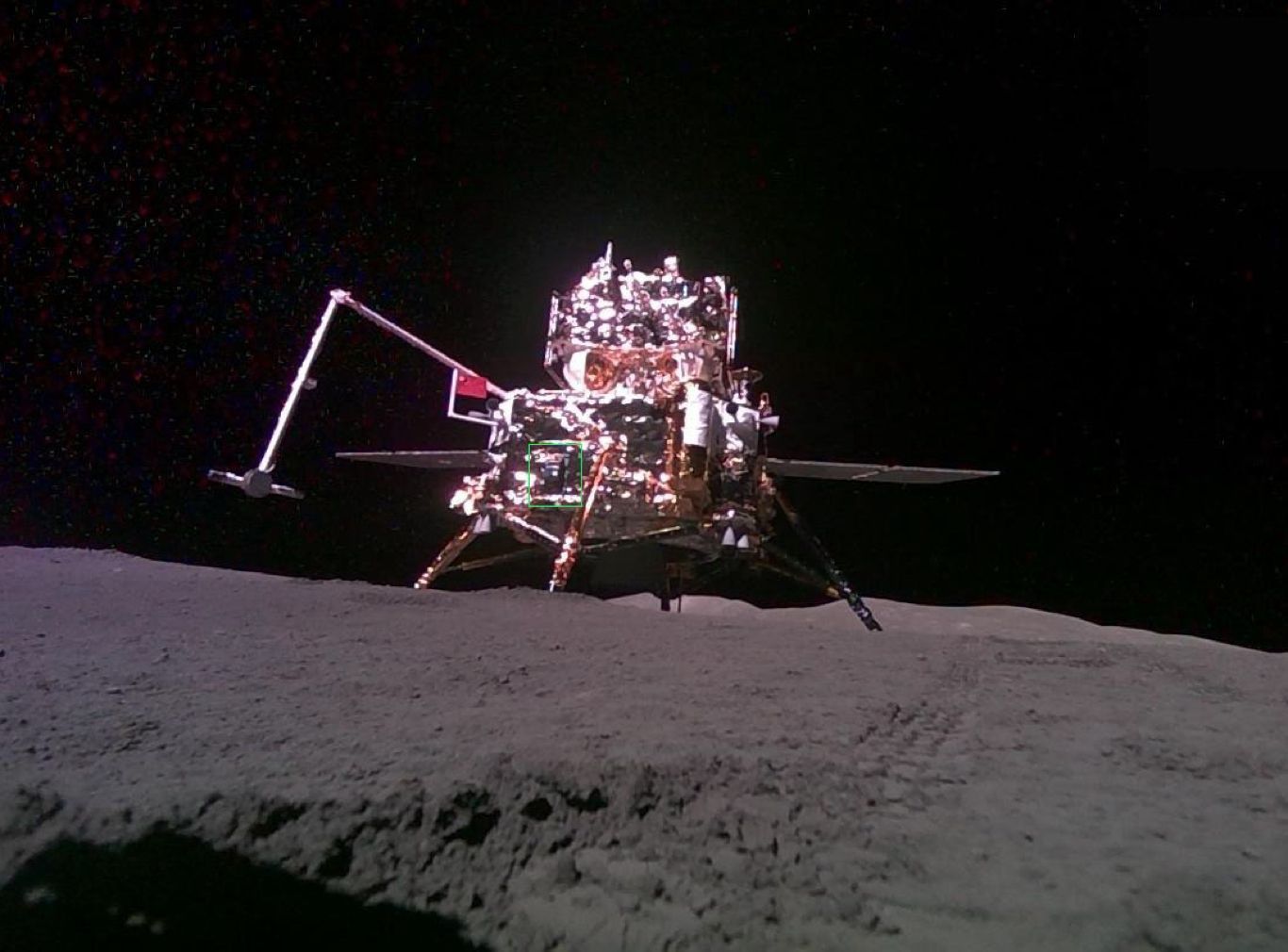
Chang'e-6 lander on the Moon (Image: CNSA/CLEP)
Legislation Must Evolve with Innovation, As Our New Chapter On The Moon Has Already Begun
Marking the latest achievement in this momentous year for lunar exploration, China is currently waiting for the return of its lunar far-side exploration mission, Chang’e-6. The mission was tasked with retrieving samples from the far-side for the first time, and is expected to return them to Earth on the 25 June.
The mission also represents an opportunity to enhance international relations through cooperative space projects, with payloads being transported on behalf of France, Sweden Italy and Pakistan. Part of China’s space programme objectives is to gather more partnerships, and they are also utilising their new space station (Tiangong) for this purpose, in cooperation with the UNOOSA.
However, it was suggested this week that Chang’e-6 could be the end of cooperative missions with Europe. The Negative Ions at the Lunar Surface (NILS) instrument was sent on the mission and is being managed by a European team, studying the detection of negative ions on the lunar surface. Yet, despite the success of the mission so far, Karl Bergquist, ESA’s international relations administrator, told SpaceNews that “for the moment there are no decisions to continue the cooperation on the Chang’e-7 or -8.”
Furthermore, ESA will not cooperate with China on the ILRS project due to Russian involvement. ESA also announced last year that they will no longer cooperate with China on Tiangong, citing financial reasons and also the of lack of “political will”.
These developments could come as a setback. Space has traditionally been neutral forum, where advertises can work together and new relationships can be forged. A shining example of this is the ongoing cooperation taking place on the ISS. It also come at a time when we are set to see rapid development of the lunar economy, led by the commercial sector. This then raises a valid question; if nations can no longer find paths to successfully cooperate in space, could it then be the role of independant commercial bodies to build dialogue and encourage new cooperative missions?
———————
At the end of last year the US Defence Advanced Research Projects Agency (DARPA) announced their Luna-10 project, a plan to develop a scalable and monetizable lunar economy within the next decade. In October, ESA announced that they will sharpen their focus on the Moon and begin the construction of lunar base within the next decade. ESA also anticipates 100 international lunar missions to take place within the next decade, assisted by the demonstration of new, efficient and cost-effective launch and lunar transport innovations.
Now more than ever, it remains vital that all nations remain open for dialogue, coordination and cooperation. The UN Conference on Sustainable Lunar Activities comes at a critical moment, as government and industry leaders strive to find common ground and build frameworks to support a peaceful and sustainable future on the Moon and in outer space.
Define Our Future

(Image: Adobe)
14 June 2024
First UN Conference on Sustainable Lunar Activities Marks a New Beginning In Striving For Peaceful and Sustainable Uses of Outer Space - Special Edition

On Tuesday 18th June, the United Nations Office for Outer Space Affairs will host the first Conference on Sustainable Lunar Activities. The aim of the conference is to bring about a meaningful discussion on lunar cooperation in order to bring the benefits of space “to all humankind”. Discussions will aim to understand shared visions as well as the different international approaches to regulating lunar activities, while aiming to “identify potential avenues for global coordination” as a means of building a sustainable future on the Moon.
Jumpt to:
Representatives from NASA, the Japanese Space Agency (JAXA), the China National Space Administration (CNSA), the Indian Space Research Organisation (ISRO) and Russia (angst others) will discuss the importance of communicates and coordination in ensuring peaceful operations. Industry leaders from private sector companies - such as Intuitive Machines and Blue Origin - will also be present, representing the increasingly leading role commercial entities are now playing in developing the New Lunar Economy.
Also, signatories from the US-led Artemis Accords and the Chinese-led International Lunar Research Station project (ILRS) will discuss these two different frameworks for outer space exploration, and how they could establish regulatory standards for a safe and peaceful future. Lastly, a workshop discussion will strive to engage discussion on where to find commonalities “including legal and regulatory aspects, that all parties can support”, aiming to support standards of behaviour.
The discussions come at a pressing time, as more national and private entities head to the Moon, with an ever-increasing and diverse set of both scientific and economically-driven missions.
Overarching problems with space governance in the commercial age
In the past year we have seen the fourth and fifth nations to land softly on the Moon (India and Japan, respectively), the first successful commercial lunar landing, and the first commercial services provided form the lunar surface (data recovery services from Lonestar Data). China are currently in the process of retrieving samples from the far-side of the Moon, and within the next 6 to 7 months we may see an additional four commercial lunar missions launch. Moreover, the European Space Agency claims that we may see over 100 missions to the Moon by the end of the decade.
The challenges that we face are well-known within the industry, many of which boil-down to the ambiguity and lack of internationally recognised regulations, especially relating to the rapid influx of commercial actors, the utilisation of space resources and the safe and peaceful coordination of activities.
As we often report, there is one binding global treaty in the form of the UN Outer Space Treaty (OST), committing all the major space powers to principles such as; space remaining the “province of all mankind”; that outer space is “not subject to national appropriation by claim of sovereignty”; and that the Moon and other celestial bodies shall be used “exclusively for peaceful purposes”.
While this does form a good moral foundation, the treaty is often seen as outdated, ambiguous and not suited for the commercial age. There is little which addresses the activities of private companies in space or the use of resources on places such as the Moon. This raises many questions; if it is forbidden to appropriate territory on the Moon, can the same be said about lunar resources, such as water, rare-earths, metals and helium-3? If the Moon is the “province of all humankind”, then does this mean that resources are also a global commons? Can resources be commercialised?
The OST makes a good start, but is now 57 years old, written at a time perhaps when the prerogative was to maintain peace and prevent the placement of weapons in orbit and outer space, amid cold war tensions. The treaty now presents big gaps in relation to the renewed intentions of public and private actors in the new space age.
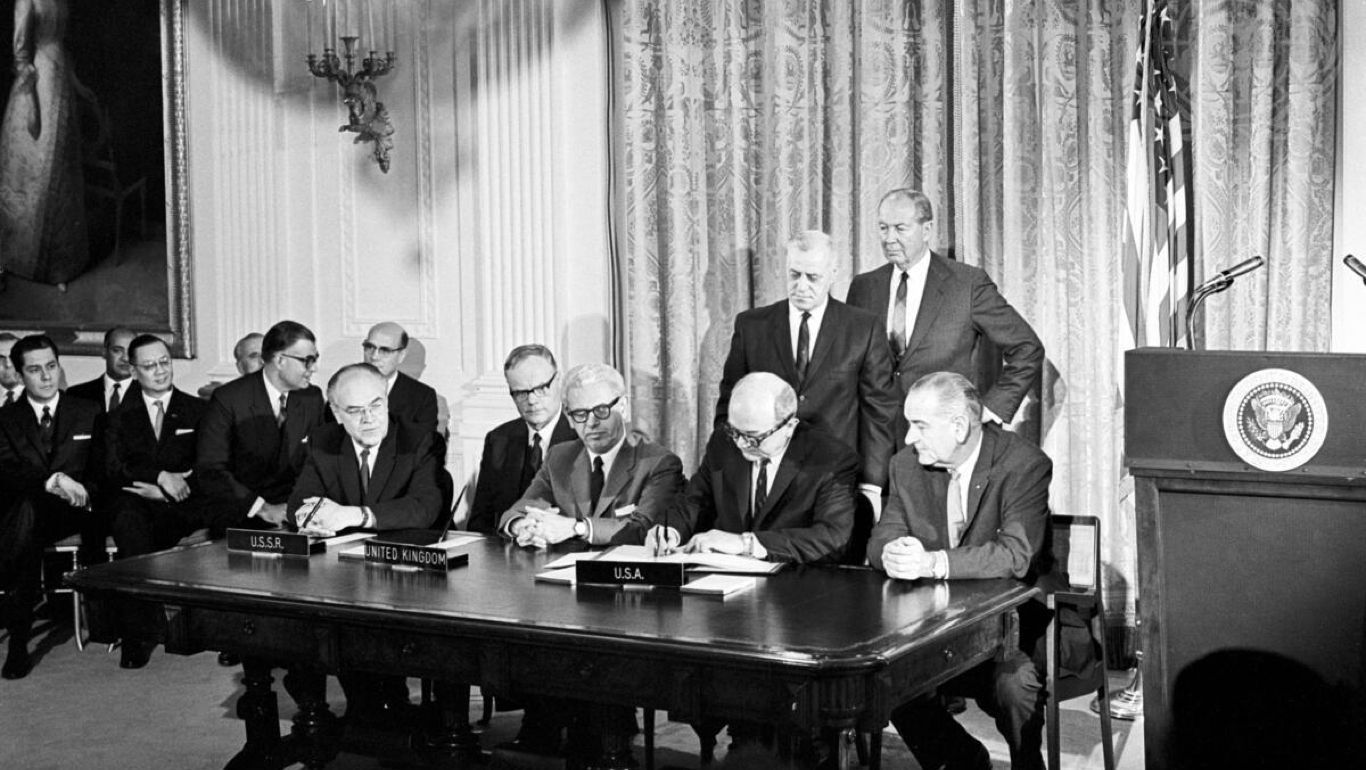
US signs OST in 1967 (Image: UN Photo)
Proposed Solutions and Developments Regarding New Governance Frameworks
Suggestions have been made in order to plug regulatory gaps in outer space, with many suggesting that the Outer Space Treaty could be reopened and updated for the modern, commercial age. Professor Douglas Ligor argues just this, in an article for War On The Rocks, saying that “the international community might consider updating the existing space legal regime to ensure it meets current political, economic, social, and technical challenges”.
This could be a potential solution, especially considering that the OST is one framework that brings the rivalling nations of the US, China and Russia to the table. The US Artemis Accords and the Chinese ILRS are also both principally based on the principles of the OST, and each side claim to promote the peaceful and sustainable use of outer space.
However, given the current geopolitical tensions, economic rivalries and growing skepticism, it seems unlikely that enough trust exists in order for all sides to agree to this outcome.
Another potential solution exists in the UN Moon Agreement (1979). This does cover the contentious issue of space resources, stating that “the moon and its natural resources are the common heritage of mankind”, and that “neither the surface nor the subsurface of the moon, nor any part thereof or natural resources in place, shall become property of any State, international intergovernmental or non- governmental organization”. This would fundamentally answer the questions regarding ownership of resources in outer space, but is perhaps the reason why the agreement has only ever been signed by 17 nations, and none of the leading space nations.
However, one thing does appear to remain consistent, and that is the role of the UN and the Committee of Peaceful Uses of Outer Space (COPUOS), established in 1959 in order to avoid the extension of national rivalries into space. More recently, in May this year, participants agreed within the UNOOSA Lisbon Declaration that the COPUOS remains the principal role as the appropriate forum to discuss current and emerging challenges to the safe and sustainable use of space.
In relation to effective space and lunar resources management, in 2022 the COPUOS agreed to create a Working Group on the Legal Aspects of Space Resources Activity, and gave a five-year mandate to study current legal frameworks and assess the benefits of new frameworks for resource activities.
While current UN governance mechanisms still don’t comprehensively address the new challenges posed by rapid technological innovation, commercialisation and resource utilisation on the Moon, it does still represent ongoing efforts to address such issues through international dialogue.
Romania’s consultative proposal and other international frameworks to plug regulatory void
At a meeting of the COPUOS Scientific and Technical Subcommittee in February this year, Romania put forwards a proposal to encourage international dialogue in order to encourage safe, peaceful and sustainable operation on the Moon.
The proposal requests that an “international consultative mechanism on sustainable lunar activities” be established, which could assist in resolving a multiplicity of technical and technological issues, such as mitigating debris, landing site coordination and sharing information regarding resource management. The proposal asks for an “Action Team on Lunar Activities Consultation (ATLAC)” under the Committee to be established for this purpose. This idea may be gaining some traction, with the matter possibly being part of discussions during the conference on the 18th.
Furthermore, in March, China made a proposal to the Working Group on Space Resources Activities, regarding the regulation of space resources utilisation. Among the recommendations, the Chinese delegation restated its commitment to Article II of the Outer Space Treaty, that the Moon is not subject to national appropriation. It furthermore calls for measures to be put in place to protect resources for scientific exploration and to investigate any depletive impact commercial activities might have on those resources.
Both the ATLAC consultative system and the proposal to fairly protect resources could work hand-in-hand, perhaps through employing the use of Blockchain ledgers to encourage transparent registration of lunar resource activities. Managing the fair use and distribution of resources will be vital in order to adhere to Article I of the OST, that the use of space shall be “the benefit for all countries”, and to protect the Moon for sustainable uses, including for scientific purposes.
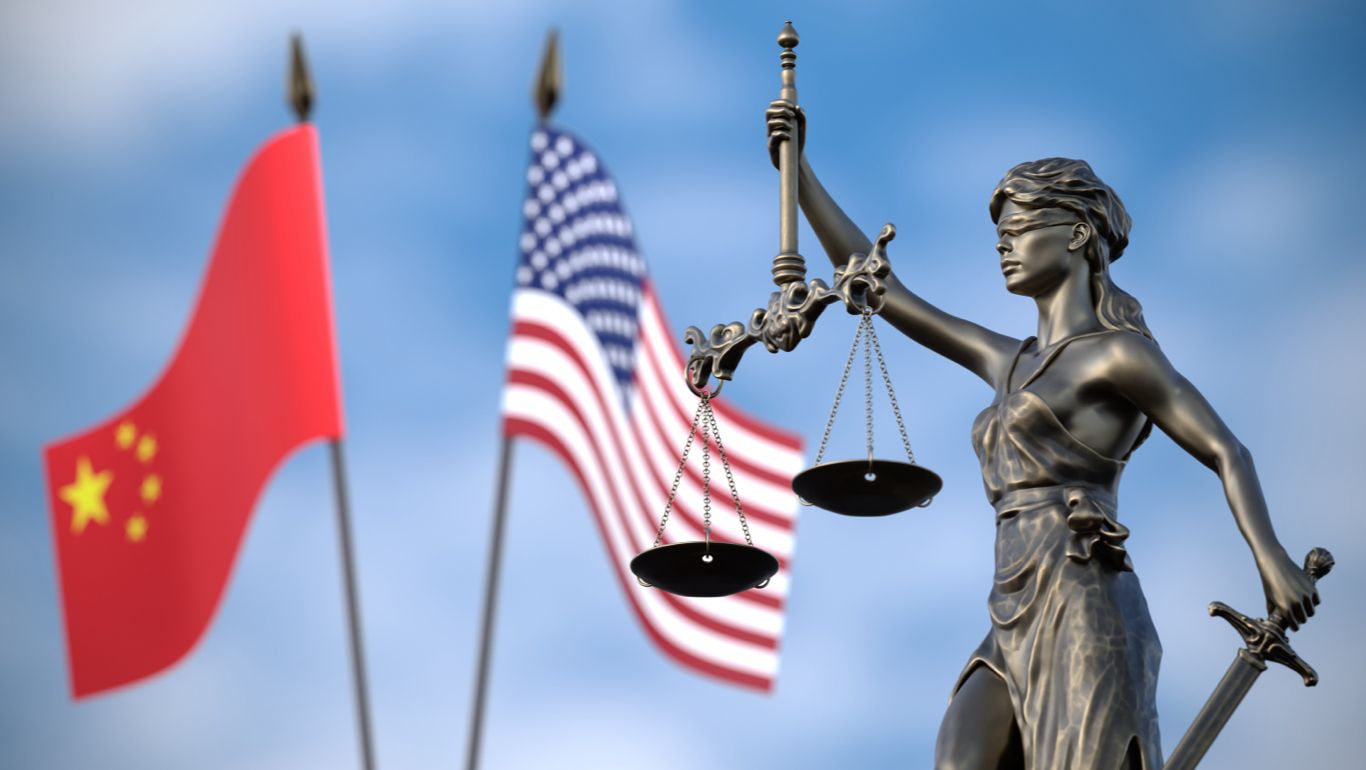
(Image: Adobe)
The US Artemis Accords, China’s ILRS Project And Russia’s BRICS Approach
This week, the US gained another ally for its proposed regulatory international framework for outer space activities, the Artemis Accords. Armenia became the 43rd member of. The Accords, which now boasts influential signatories such as India, Japan, Germany and the UK.
The framework does put forwards a potential solution for comprehensive space governance, covering areas such as commercial activities and regulating for the extraction and use of resources on the Moon and other celestial bodies. It also promotes the peaceful and sustainable use of outer space, strives to commit to peaceful development and claims to adhere to the principles of the OST. However, there are still notable absentees from the Accords, namely China and Russia, and it doesn’t seem likely that they will sign-up any time soon.
Earthly geopolitical and economic rivalries can be cited as reasons for this, but there are also sticking points within the Accords, one of which is the US proposed use of “safety zones” or “exclusion zones” on the Moon. On the surface, this idea originates from the principle of “due regard” which is embedded within the OST, and would call for a zone of no-entry around an active site on the Moon, in order to prevent armful interference.
However, the use of these zones has also been put forwards as a means reserving mineral resources, with University of Mississippi professor, Michele Halon, arguing that a great advantage in accessing lunar resources lies with those who establish a presence first, adding that even a crash at a mineral rich area might create a 20 kilometer “safety zone” excluding others’ access.
China have expressed skepticism regarding the use of these zones, and Russia has accused the Accords of being too “US-centric”. China leads its own vision for the future on the Moon, the International Lunar Research Station project (ILRS), and to date has gathered signatures from 23 nations and organisations. While the ILRS is not necessarily a proposed governance framework, it does also aim to construct permanent infrastructure on the Moon through the use and utilisation of lunar resources.
Russia, while part of the ILRS, have put forwards an additional proposal to form Space Council with BRICS nations, an idea which was supported by South Africa just this week. Head of Russian space agency Roscosmos, Yuri Borisov, said this that the council could be used to promote cooperative projects and address matters on international space policy.
However, the BRICS’s council doesn’t provide a universal solution, and it seems highly unlikely that the US would sign-up to China’s ILRS project any time soon. Moreover, since Russia’s invasion of Ukraine and subsequent international isolation from the West, their involvement in the ILRS project may actually be deterring nations to join-on.
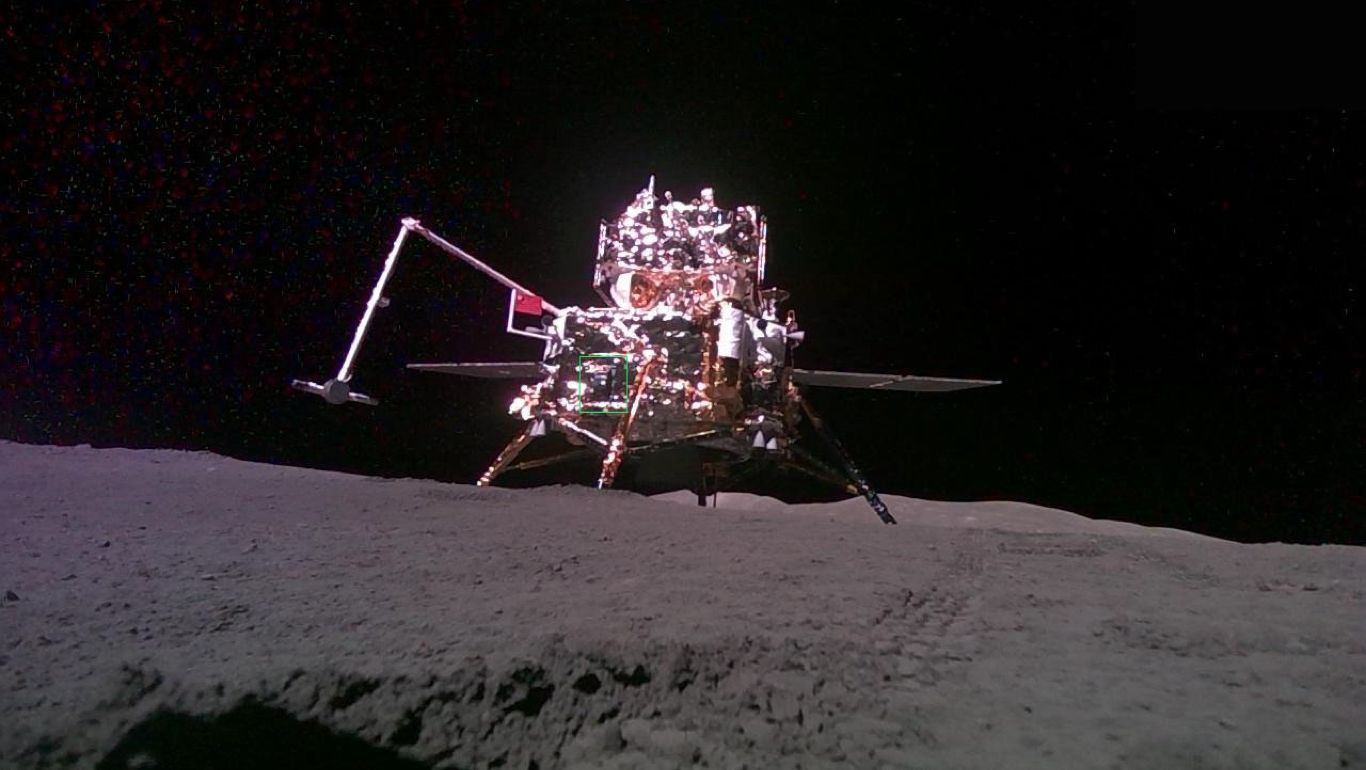
Chang'e-6 lander on the Moon (Image: CNSA/CLEP)
Legislation Must Evolve with Innovation, As Our New Chapter On The Moon Has Already Begun
Marking the latest achievement in this momentous year for lunar exploration, China is currently waiting for the return of its lunar far-side exploration mission, Chang’e-6. The mission was tasked with retrieving samples from the far-side for the first time, and is expected to return them to Earth on the 25 June.
The mission also represents an opportunity to enhance international relations through cooperative space projects, with payloads being transported on behalf of France, Sweden Italy and Pakistan. Part of China’s space programme objectives is to gather more partnerships, and they are also utilising their new space station (Tiangong) for this purpose, in cooperation with the UNOOSA.
However, it was suggested this week that Chang’e-6 could be the end of cooperative missions with Europe. The Negative Ions at the Lunar Surface (NILS) instrument was sent on the mission and is being managed by a European team, studying the detection of negative ions on the lunar surface. Yet, despite the success of the mission so far, Karl Bergquist, ESA’s international relations administrator, told SpaceNews that “for the moment there are no decisions to continue the cooperation on the Chang’e-7 or -8.”
Furthermore, ESA will not cooperate with China on the ILRS project due to Russian involvement. ESA also announced last year that they will no longer cooperate with China on Tiangong, citing financial reasons and also the of lack of “political will”.
These developments could come as a setback. Space has traditionally been neutral forum, where advertises can work together and new relationships can be forged. A shining example of this is the ongoing cooperation taking place on the ISS. It also come at a time when we are set to see rapid development of the lunar economy, led by the commercial sector. This then raises a valid question; if nations can no longer find paths to successfully cooperate in space, could it then be the role of independant commercial bodies to build dialogue and encourage new cooperative missions?
———————
At the end of last year the US Defence Advanced Research Projects Agency (DARPA) announced their Luna-10 project, a plan to develop a scalable and monetizable lunar economy within the next decade. In October, ESA announced that they will sharpen their focus on the Moon and begin the construction of lunar base within the next decade. ESA also anticipates 100 international lunar missions to take place within the next decade, assisted by the demonstration of new, efficient and cost-effective launch and lunar transport innovations.
Now more than ever, it remains vital that all nations remain open for dialogue, coordination and cooperation. The UN Conference on Sustainable Lunar Activities comes at a critical moment, as government and industry leaders strive to find common ground and build frameworks to support a peaceful and sustainable future on the Moon and in outer space.
Share this article
14 June 2024
First UN Conference on Sustainable Lunar Activities Marks a New Beginning In Striving For Peaceful and Sustainable Uses of Outer Space - Special Edition

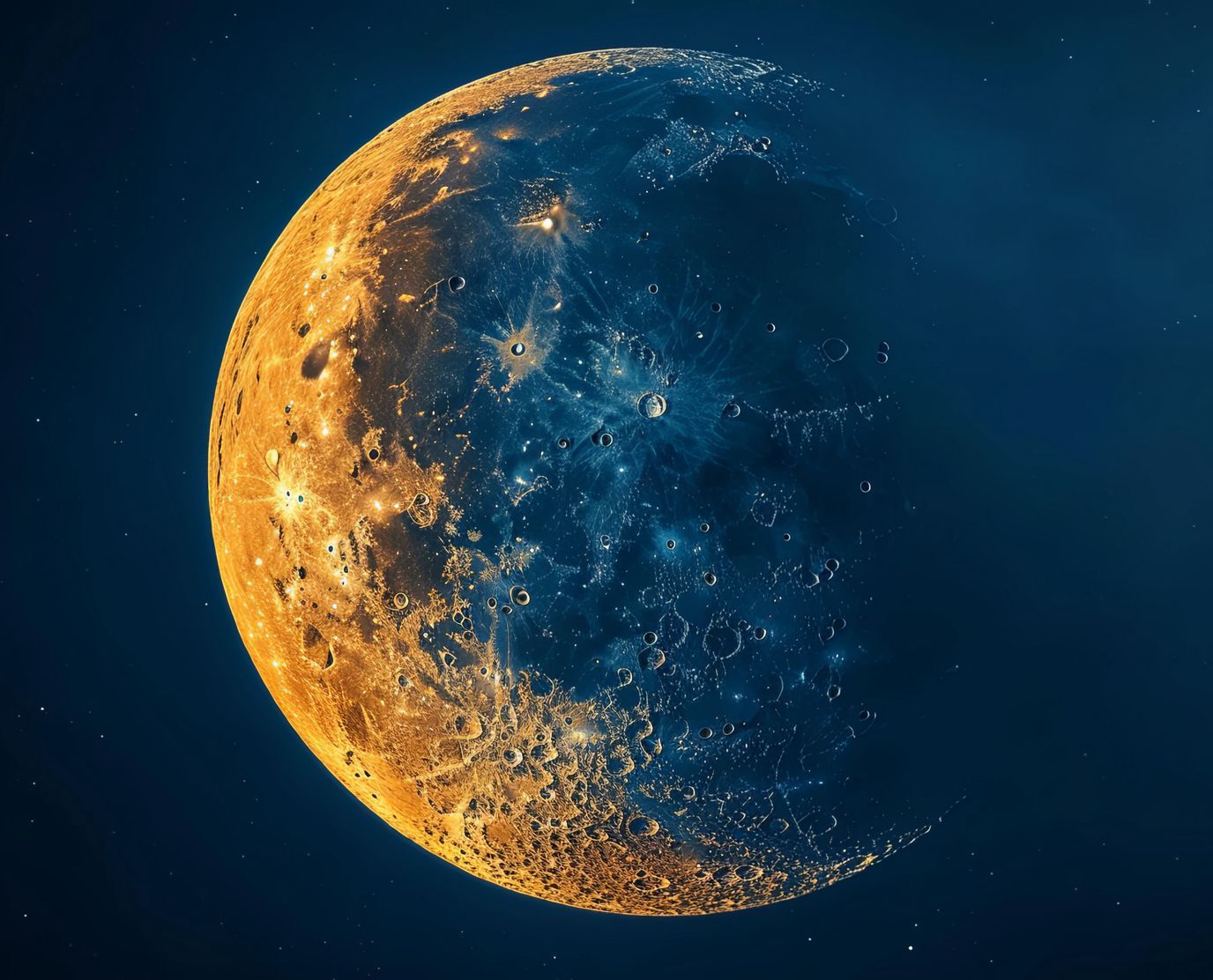
(Image: Adobe)
On Tuesday 18th June, the United Nations Office for Outer Space Affairs will host the first Conference on Sustainable Lunar Activities. The aim of the conference is to bring about a meaningful discussion on lunar cooperation in order to bring the benefits of space “to all humankind”. Discussions will aim to understand shared visions as well as the different international approaches to regulating lunar activities, while aiming to “identify potential avenues for global coordination” as a means of building a sustainable future on the Moon.
Representatives from NASA, the Japanese Space Agency (JAXA), the China National Space Administration (CNSA), the Indian Space Research Organisation (ISRO) and Russia (angst others) will discuss the importance of communicates and coordination in ensuring peaceful operations. Industry leaders from private sector companies - such as Intuitive Machines and Blue Origin - will also be present, representing the increasingly leading role commercial entities are now playing in developing the New Lunar Economy.
Also, signatories from the US-led Artemis Accords and the Chinese-led International Lunar Research Station project (ILRS) will discuss these two different frameworks for outer space exploration, and how they could establish regulatory standards for a safe and peaceful future. Lastly, a workshop discussion will strive to engage discussion on where to find commonalities “including legal and regulatory aspects, that all parties can support”, aiming to support standards of behaviour.
The discussions come at a pressing time, as more national and private entities head to the Moon, with an ever-increasing and diverse set of both scientific and economically-driven missions.
Overarching problems with space governance in the commercial age
In the past year we have seen the fourth and fifth nations to land softly on the Moon (India and Japan, respectively), the first successful commercial lunar landing, and the first commercial services provided form the lunar surface (data recovery services from Lonestar Data). China are currently in the process of retrieving samples from the far-side of the Moon, and within the next 6 to 7 months we may see an additional four commercial lunar missions launch. Moreover, the European Space Agency claims that we may see over 100 missions to the Moon by the end of the decade.
The challenges that we face are well-known within the industry, many of which boil-down to the ambiguity and lack of internationally recognised regulations, especially relating to the rapid influx of commercial actors, the utilisation of space resources and the safe and peaceful coordination of activities.
As we often report, there is one binding global treaty in the form of the UN Outer Space Treaty (OST), committing all the major space powers to principles such as; space remaining the “province of all mankind”; that outer space is “not subject to national appropriation by claim of sovereignty”; and that the Moon and other celestial bodies shall be used “exclusively for peaceful purposes”.
While this does form a good moral foundation, the treaty is often seen as outdated, ambiguous and not suited for the commercial age. There is little which addresses the activities of private companies in space or the use of resources on places such as the Moon. This raises many questions; if it is forbidden to appropriate territory on the Moon, can the same be said about lunar resources, such as water, rare-earths, metals and helium-3? If the Moon is the “province of all humankind”, then does this mean that resources are also a global commons? Can resources be commercialised?
The OST makes a good start, but is now 57 years old, written at a time perhaps when the prerogative was to maintain peace and prevent the placement of weapons in orbit and outer space, amid cold war tensions. The treaty now presents big gaps in relation to the renewed intentions of public and private actors in the new space age.
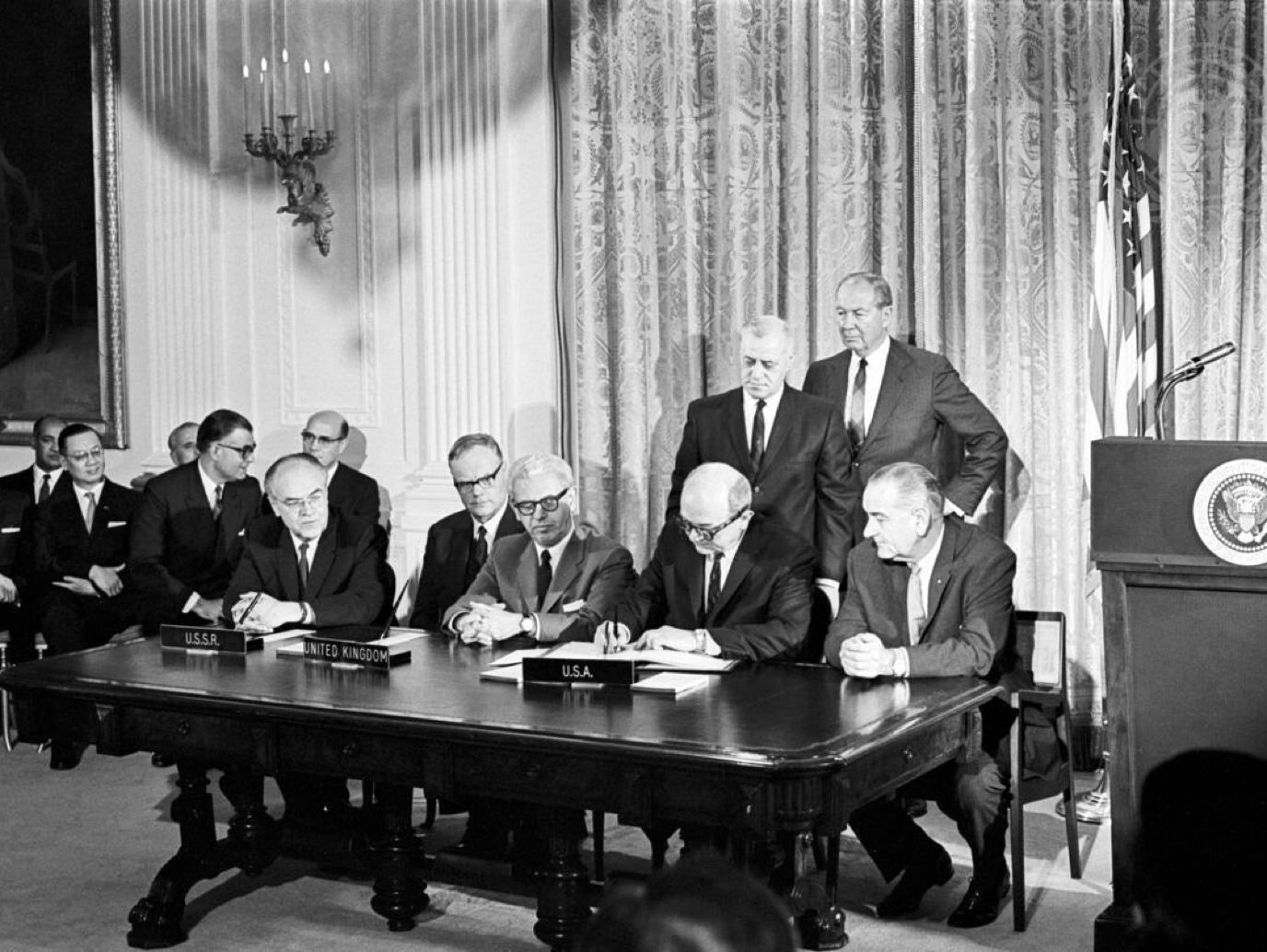
US signs OST in 1967 (Image: UN Photo)
Proposed Solutions and Developments Regarding New Governance Frameworks
Suggestions have been made in order to plug regulatory gaps in outer space, with many suggesting that the Outer Space Treaty could be reopened and updated for the modern, commercial age. Professor Douglas Ligor argues just this, in an article for War On The Rocks, saying that “the international community might consider updating the existing space legal regime to ensure it meets current political, economic, social, and technical challenges”.
This could be a potential solution, especially considering that the OST is one framework that brings the rivalling nations of the US, China and Russia to the table. The US Artemis Accords and the Chinese ILRS are also both principally based on the principles of the OST, and each side claim to promote the peaceful and sustainable use of outer space.
However, given the current geopolitical tensions, economic rivalries and growing skepticism, it seems unlikely that enough trust exists in order for all sides to agree to this outcome.
Another potential solution exists in the UN Moon Agreement (1979). This does cover the contentious issue of space resources, stating that “the moon and its natural resources are the common heritage of mankind”, and that “neither the surface nor the subsurface of the moon, nor any part thereof or natural resources in place, shall become property of any State, international intergovernmental or non- governmental organization”. This would fundamentally answer the questions regarding ownership of resources in outer space, but is perhaps the reason why the agreement has only ever been signed by 17 nations, and none of the leading space nations.
However, one thing does appear to remain consistent, and that is the role of the UN and the Committee of Peaceful Uses of Outer Space (COPUOS), established in 1959 in order to avoid the extension of national rivalries into space. More recently, in May this year, participants agreed within the UNOOSA Lisbon Declaration that the COPUOS remains the principal role as the appropriate forum to discuss current and emerging challenges to the safe and sustainable use of space.
In relation to effective space and lunar resources management, in 2022 the COPUOS agreed to create a Working Group on the Legal Aspects of Space Resources Activity, and gave a five-year mandate to study current legal frameworks and assess the benefits of new frameworks for resource activities.
While current UN governance mechanisms still don’t comprehensively address the new challenges posed by rapid technological innovation, commercialisation and resource utilisation on the Moon, it does still represent ongoing efforts to address such issues through international dialogue.
Romania’s consultative proposal and other international frameworks to plug regulatory void
At a meeting of the COPUOS Scientific and Technical Subcommittee in February this year, Romania put forwards a proposal to encourage international dialogue in order to encourage safe, peaceful and sustainable operation on the Moon.
The proposal requests that an “international consultative mechanism on sustainable lunar activities” be established, which could assist in resolving a multiplicity of technical and technological issues, such as mitigating debris, landing site coordination and sharing information regarding resource management. The proposal asks for an “Action Team on Lunar Activities Consultation (ATLAC)” under the Committee to be established for this purpose. This idea may be gaining some traction, with the matter possibly being part of discussions during the conference on the 18th.
Furthermore, in March, China made a proposal to the Working Group on Space Resources Activities, regarding the regulation of space resources utilisation. Among the recommendations, the Chinese delegation restated its commitment to Article II of the Outer Space Treaty, that the Moon is not subject to national appropriation. It furthermore calls for measures to be put in place to protect resources for scientific exploration and to investigate any depletive impact commercial activities might have on those resources.
Both the ATLAC consultative system and the proposal to fairly protect resources could work hand-in-hand, perhaps through employing the use of Blockchain ledgers to encourage transparent registration of lunar resource activities. Managing the fair use and distribution of resources will be vital in order to adhere to Article I of the OST, that the use of space shall be “the benefit for all countries”, and to protect the Moon for sustainable uses, including for scientific purposes.
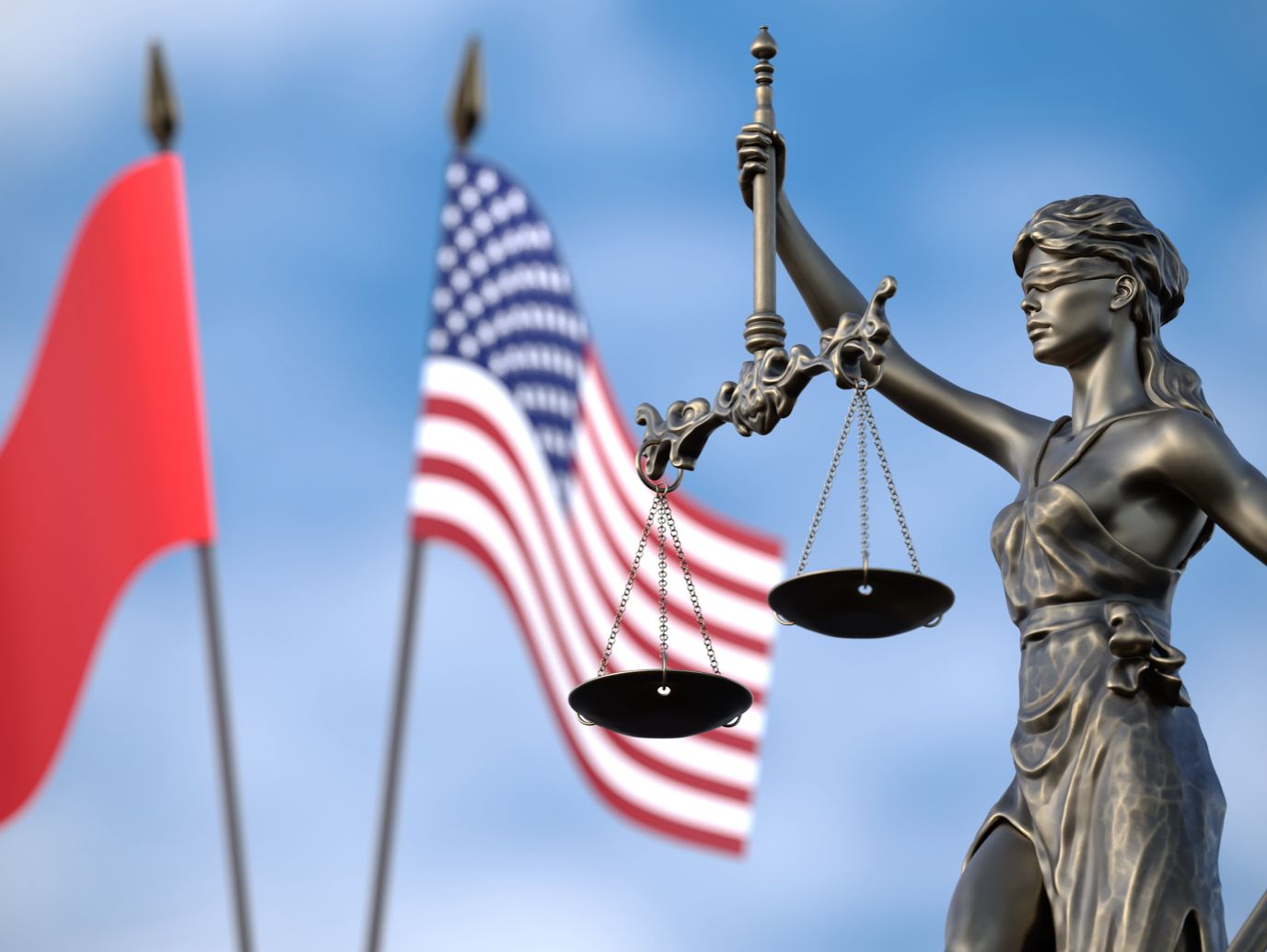
(Image: Adobe)
The US Artemis Accords, China’s ILRS Project And Russia’s BRICS Approach
This week, the US gained another ally for its proposed regulatory international framework for outer space activities, the Artemis Accords. Armenia became the 43rd member of. The Accords, which now boasts influential signatories such as India, Japan, Germany and the UK.
The framework does put forwards a potential solution for comprehensive space governance, covering areas such as commercial activities and regulating for the extraction and use of resources on the Moon and other celestial bodies. It also promotes the peaceful and sustainable use of outer space, strives to commit to peaceful development and claims to adhere to the principles of the OST. However, there are still notable absentees from the Accords, namely China and Russia, and it doesn’t seem likely that they will sign-up any time soon.
Earthly geopolitical and economic rivalries can be cited as reasons for this, but there are also sticking points within the Accords, one of which is the US proposed use of “safety zones” or “exclusion zones” on the Moon. On the surface, this idea originates from the principle of “due regard” which is embedded within the OST, and would call for a zone of no-entry around an active site on the Moon, in order to prevent armful interference.
However, the use of these zones has also been put forwards as a means reserving mineral resources, with University of Mississippi professor, Michele Halon, arguing that a great advantage in accessing lunar resources lies with those who establish a presence first, adding that even a crash at a mineral rich area might create a 20 kilometer “safety zone” excluding others’ access.
China have expressed skepticism regarding the use of these zones, and Russia has accused the Accords of being too “US-centric”. China leads its own vision for the future on the Moon, the International Lunar Research Station project (ILRS), and to date has gathered signatures from 23 nations and organisations. While the ILRS is not necessarily a proposed governance framework, it does also aim to construct permanent infrastructure on the Moon through the use and utilisation of lunar resources.
Russia, while part of the ILRS, have put forwards an additional proposal to form Space Council with BRICS nations, an idea which was supported by South Africa just this week. Head of Russian space agency Roscosmos, Yuri Borisov, said this that the council could be used to promote cooperative projects and address matters on international space policy.
However, the BRICS’s council doesn’t provide a universal solution, and it seems highly unlikely that the US would sign-up to China’s ILRS project any time soon. Moreover, since Russia’s invasion of Ukraine and subsequent international isolation from the West, their involvement in the ILRS project may actually be deterring nations to join-on.

Chang'e-6 lander on the Moon (Image: CNSA/CLEP)
Legislation Must Evolve with Innovation, As Our New Chapter On The Moon Has Already Begun
Marking the latest achievement in this momentous year for lunar exploration, China is currently waiting for the return of its lunar far-side exploration mission, Chang’e-6. The mission was tasked with retrieving samples from the far-side for the first time, and is expected to return them to Earth on the 25 June.
The mission also represents an opportunity to enhance international relations through cooperative space projects, with payloads being transported on behalf of France, Sweden Italy and Pakistan. Part of China’s space programme objectives is to gather more partnerships, and they are also utilising their new space station (Tiangong) for this purpose, in cooperation with the UNOOSA.
However, it was suggested this week that Chang’e-6 could be the end of cooperative missions with Europe. The Negative Ions at the Lunar Surface (NILS) instrument was sent on the mission and is being managed by a European team, studying the detection of negative ions on the lunar surface. Yet, despite the success of the mission so far, Karl Bergquist, ESA’s international relations administrator, told SpaceNews that “for the moment there are no decisions to continue the cooperation on the Chang’e-7 or -8.”
Furthermore, ESA will not cooperate with China on the ILRS project due to Russian involvement. ESA also announced last year that they will no longer cooperate with China on Tiangong, citing financial reasons and also the of lack of “political will”.
These developments could come as a setback. Space has traditionally been neutral forum, where advertises can work together and new relationships can be forged. A shining example of this is the ongoing cooperation taking place on the ISS. It also come at a time when we are set to see rapid development of the lunar economy, led by the commercial sector. This then raises a valid question; if nations can no longer find paths to successfully cooperate in space, could it then be the role of independant commercial bodies to build dialogue and encourage new cooperative missions?
———————
At the end of last year the US Defence Advanced Research Projects Agency (DARPA) announced their Luna-10 project, a plan to develop a scalable and monetizable lunar economy within the next decade. In October, ESA announced that they will sharpen their focus on the Moon and begin the construction of lunar base within the next decade. ESA also anticipates 100 international lunar missions to take place within the next decade, assisted by the demonstration of new, efficient and cost-effective launch and lunar transport innovations.
Now more than ever, it remains vital that all nations remain open for dialogue, coordination and cooperation. The UN Conference on Sustainable Lunar Activities comes at a critical moment, as government and industry leaders strive to find common ground and build frameworks to support a peaceful and sustainable future on the Moon and in outer space.
Share this article

